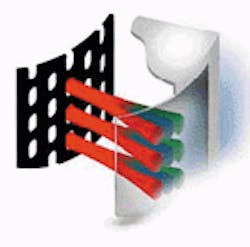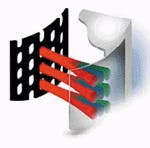Vision technologies keep on solving problems
Machine-vision and imaging-processing developers are continuously solving difficult problems while improving system performance and lowering overall costs. This month's features strongly reinforce these principles. They cover industrial system inspection of monitor aperture masks, medical system integration of digital radiology, military tracking of guided missiles, advanced 3-D imaging, and light-emitting-diode lighting products.
For nearly all displays, defects in the etched holes of their aperture masks must be found early in the production process. Automated machine-vision systems, reports Mike Muehlemann, president of Illumination Technologies Inc., are overcoming the inspection challenges of raw data speed and sufficient processing algorithms by incorporating optical imaging techniques (see p. 23).
The radiology departments of most hospitals and health associations have long functioned as separate imaging islands. Now, says contributing editor Larry Curran, integrated imaging systems are stitching together multiple-facility radiology sites and digital images to hospital information systems over a PACS network (see p. 31).
Measuring the trajectory performance of missile systems demands expensive equipment and data analysis. Dual-PC-based video-camera-based vision systems are acquiring, processing, and analyzing test data while the missile continues its live operations, says contributing editor John Haystead (see p. 35).
Current display devices use various methods to produce the illusion of 3-D space but require special viewing devices. Recent parallax-type autostereoscopic designs, however, according to editor Andrew Wilson, have integrated lenticular panoramagrams with 2-D devices to produce spatial images for viewers without the need for glasses or goggles (see p. 45).
To meet complex illumination requirements, designers are turning to new LED lamps to obtain a uniform, flicker-free, cooler light source. In this month's Product Focus, editor Andy Wilson explains how LED sources are producing less lens aberration and more consistent image quality (see p. 55).
George KotellyEditor in Chief[email protected]
